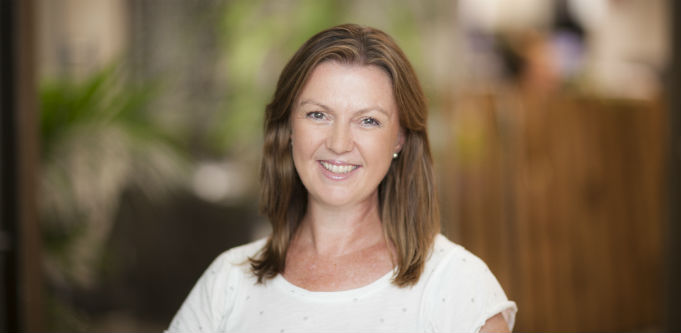
Michelle Ridsdale, chief people officer at Envato. Source: Supplied.
Australian marketplace tech startup Envato has launched an apprenticeship program for developers, with a trial run already producing two full-time staff members.
Speaking to StartupSmart, Envato chief people officer Michelle Ridsdale says the program is designed to address “the talent shortage for software engineers and developers”.
Founded in Melbourne in 2006 by husband and wife team Collis and Cyan Ta’eed, Envato provides a range of online marketplaces for digital creatives, including platforms for hiring developers and designers, for tutorials, and for launching websites without having to code.
Now, the Envato marketplaces have a community of more than 10 million registered users, and creatives have earned more than $500 million, combined. The company itself has annual revenue of $74 million.
Envato has been hailed as one of Australia’s best places to work, already supporting women in the workplace, and sharing profits with staff.
However, according to Ridsdale, technology companies aren’t just competing with each other for the best people anymore, she says.
“Most progressive businesses do have a technology team these days … They’re all expanding and hiring tech talent,” she says.
Through the apprenticeship scheme, driven by Envato developer Mario Visic, apprentices work with a full-time mentor to learn coding theory before moving on to practical activities and hands-on training. After 12 months of training, there is a possibility of taking on a full-time role as a junior developer.
While it’s a leg-up for the developers themselves, Ridsdale says it’s also “a great way to increase talent diversity”.
Achieving a diverse technology workforce, and particularly bringing women on board, is still a challenge, Ridsdale says, “and it’s not an easy one to solve”.
“It starts right back at primary school,” she says.
“Girls are not necessarily encouraged in maths. Once they’re in late high school or university, it’s too late.”
With more men than women graduating with computing qualifications, schemes like Envato’s can provide “an alternate way for women to enter the technology space”, says Ridsdale.
However, “solving the diversity challenge in technology is going to be a multi-pronged approach,” she says.
And this approach shouldn’t be focused on gender diversity alone — it should also take into account ethnic and age diversity. Ridsdale says one of the two recent graduates from Envato’s apprenticeship program did her undergraduate degree in the 1980s.
The only requirements for the scheme are an interest in coding and developing, and problem-solving skills.
“The benefit of the apprentice program is that it’s open to a range of people — older younger, from Australia or not,” says Ridsdale.
The scheme started out with two apprentices, both of whom are now fully-fledged junior developers, while another two apprentices have come on board.
While Ridsdale says Envato will eventually scale the system up, she doesn’t have a target in mind, preferring to focus on “training people correctly”.
“We want to make sure it’s a robust program,” she says, adding that the team will likely scale up the operation “once we’re sure we’ve got it right”.
In fact, there’s an opportunity for programs like this to be implemented right across the technology industry, Ridsdale says, as part of efforts to bring more diversity into the whole sector.
“We would really like to see it scale,” she adds.
For tech companies still in the startup stage, Ridsdale stresses the importance of getting the selection criteria right when recruiting new talent.
It’s about “defining what is a good candidate and assessing the quality of the people you’re hiring”, she says.
“If you start with a low bar, it’s really hard to increase that bar,” she says.
This is especially true when you’re onboarding software developers, says Ridsdale. If a business starts out with low-quality code, it’s difficult to go back and rewrite it.
“Look at the assessment piece,” Ridsdale advises. “Particularly with software developers.”
It’s a similar story when it comes to creating a diverse organisation. Startups should think about the type of environment they want to create, right from the beginning, and be “open to creating an inclusive environment, regardless of people’s background”.
If a startup doesn’t have a value system in place, and doesn’t hire in line with its values, once it grows to 150 or 200 people, it will be difficult to get them all on the same page, Ridsdale says.
“Diversity is something that is ingrained in an organisation,” she adds.
“Once that’s at the core, it shouldn’t be a barrier when growing.”


COMMENTS
SmartCompany is committed to hosting lively discussions. Help us keep the conversation useful, interesting and welcoming. We aim to publish comments quickly in the interest of promoting robust conversation, but we’re a small team and we deploy filters to protect against legal risk. Occasionally your comment may be held up while it is being reviewed, but we’re working as fast as we can to keep the conversation rolling.
The SmartCompany comment section is members-only content. Please subscribe to leave a comment.
The SmartCompany comment section is members-only content. Please login to leave a comment.